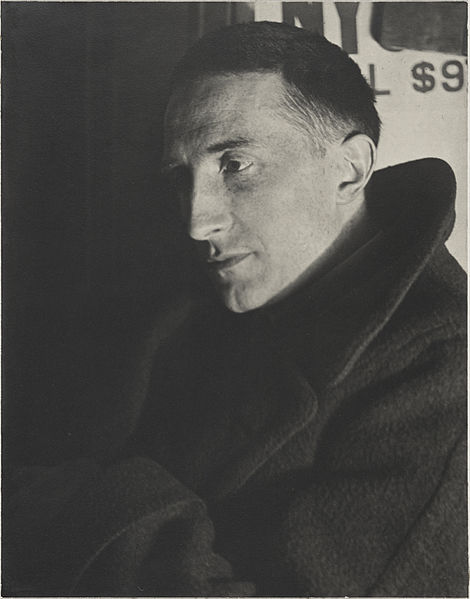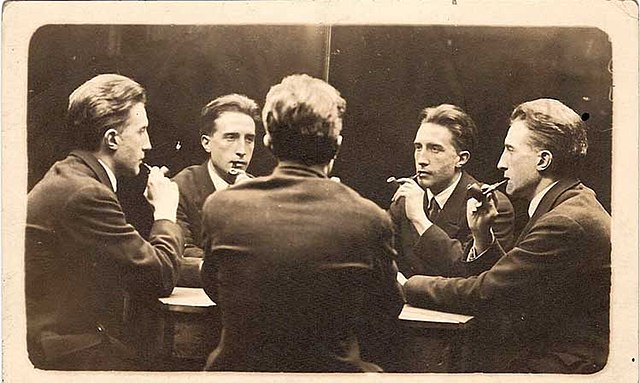Aleatoric music is music in which some element of the composition is left to chance, and/or some primary element of a composed work's realization is left to the determination of its performer(s). The term is most often associated with procedures in which the chance element involves a relatively limited number of possibilities.
Karlheinz Stockhausen lecturing on Klavierstück XI at Darmstadt, July 1957
Henri-Robert-Marcel Duchamp was a French painter, sculptor, chess player, and writer whose work is associated with Cubism, Dada, and conceptual art. He is commonly regarded, along with Pablo Picasso and Henri Matisse, as one of the three artists who helped to define the revolutionary developments in the plastic arts in the opening decades of the 20th century, responsible for significant developments in painting and sculpture. He has had an immense impact on 20th- and 21st-century art, and a seminal influence on the development of conceptual art. By the time of World War I, he had rejected the work of many of his fellow artists as "retinal", intended only to please the eye. Instead, he wanted to use art to serve the mind.
Portrait of Marcel Duchamp, 1920–21 by Man Ray, Yale University Art Gallery
Three Duchamp brothers, left to right: Marcel Duchamp, Jacques Villon, and Raymond Duchamp-Villon in the garden of Jacques Villon's studio in Puteaux, France, 1914, (Smithsonian Institution collections)
Five-Way Portrait of Marcel Duchamp, 21 June 1917, New York City
Photograph of Duchamp's Fountain (1917) by Alfred Stieglitz





